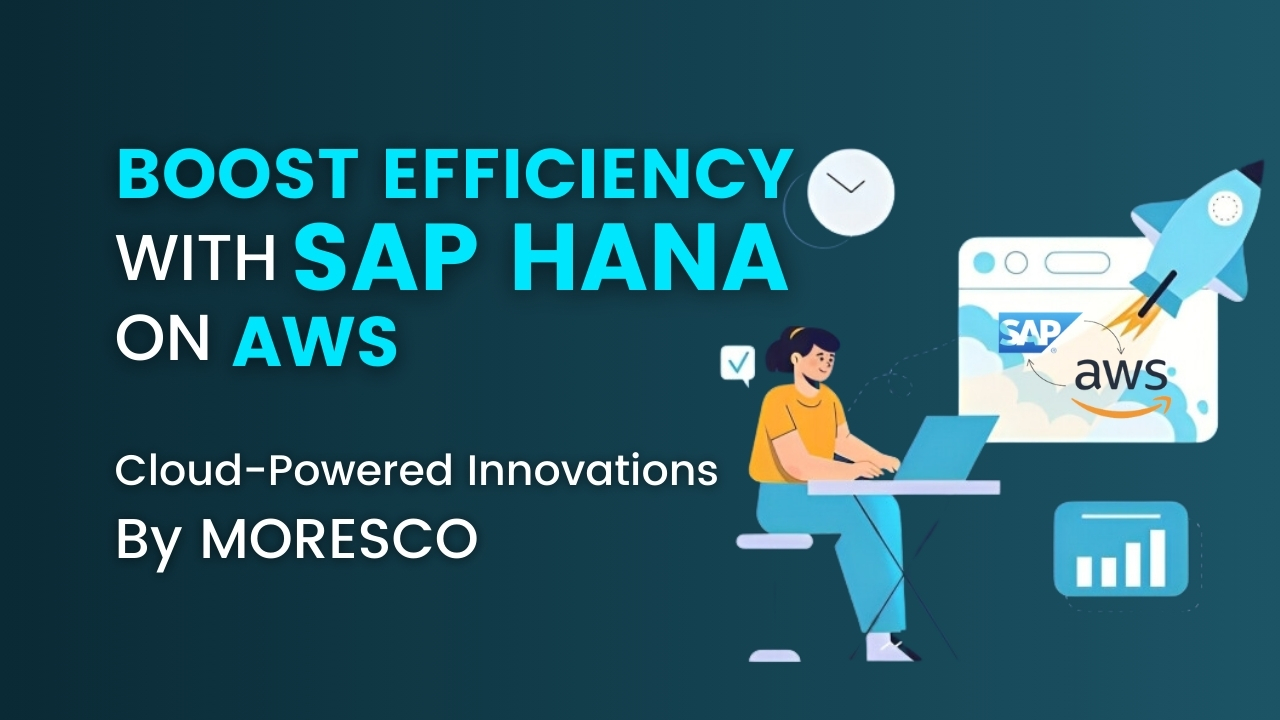Are you seeking to extract maximum value from your large datasets?
The combination of SAP HANA and Amazon Web Services (AWS) offers a powerful solution to accelerate analytics, decision-making, and innovation. Customers expect personalized experiences, markets demand quicker responses to changing conditions, and industries are undergoing digital transformations to stay ahead.
Companies that fail to adapt risk falling behind!
In reality, the challenge for most businesses is processing large volumes of data efficiently and making use of the information to drive real-time decisions. Traditional IT infrastructures often cannot meet these demands regarding ability, scalability and performance. This is where cloud solutions, especially SAP HANA on AWS, step in as a game-changer.
Let’s look at what is possible with SAP HANA on AWS and how this enables our customers' businesses to drive faster insights and innovate.

Everything You Need to Know About SAP HANA
SAP HANA is the next-generation, in-memory database that drastically reduces data access latency by storing information in memory rather than on a disk. Key features of SAP HANA include:
In-Memory Computing: Data is stored and processed in memory and, hence, does not need disk I/O.
Columnar Storage: Data is stored in columnar format to optimize the performance of analytical queries.
Advanced Analytics: Advanced analytics functions, such as predictive analytics, text analytics, and spatial analytics, are supported.
SAP Application Integration: The integration with SAP ERP, S/4HANA, and other areas of SAP solutions is ideal.
SAP HANA’s In-Memory Computing Capabilities
One of the most important factors regarding SAP HANA (High-Performance Analytic Appliance) is that it enables companies to process volumes of data at unprecedented speeds.
Unlike the traditional databases that store data on disk, SAP HANA stores the data in RAM, hence considerably reducing the time it takes to fetch and analyze information.
This functionality of in-memory computing becomes easier for those businesses that rely much on real-time analytics, complex transactions, and data-driven decisions.
The main features of the SAP HANA:
Real-time Analytics: Processes large volumes of data in real-time to immediately provide insight for rapid decision-making.
Data Unification: The platform unifies transaction and analytics data from multiple sources into a single source to have a unified view of their business activities.
Advanced Analytics: Advanced analytical processing including predictive analytics, text analytics, and spatial data processing.
Benefits of SAP HANA on AWS
Scalability: AWS will enable the scaling up or ramping down of resources for SAP HANA to meet changing business demands.
Reliability: AWS provides high availability and disaster recovery options to ensure business continuity.
Cost-Efficiency: Pay-as-you-use pricing models, among others, joined with cost optimization tools, help businesses keep a tab on their costs.
Performance: AWS infrastructure provides the much-needed performance and throughput that these demanding SAP HANA workloads require.
Innovation: To increase SAP HANA's capabilities, make use of data lakes, IoT, and machine learning on AWS.
Key Use Cases
Real-time Analytics: Gain immediate insights into business operations to speed up decision-making.
Predictive Analytics: Forecast future trends and outcomes based on historical data.
Fraud Detection: Identify anomalies in real-time and detect suspicious activity.
Customer 360: Get a comprehensive view of the customer for personalization of interactions.
Supply Chain Optimization: Improve operational efficiency, reduce costs, and offer real-time visibility.
Here is a table summarizing the steps for implementing SAP HANA on AWS:
| Implementation Area | Process |
|---|---|
| Deployment Options |
|
| Sizing and Configuration |
|
| Data Migration |
|
| Backup and Recovery |
|
| Monitoring and Management |
|
Conclusion
The use of SAP HANA on AWS is an enabler in reality, where the value of corporate data can be attained. With in-memory computing capabilities, businesses are able to realize faster insights, improving decision-making and helping attain a competitive advantage. It provides scalability, reliability, and cost-efficiency features through AWS to ensure that flexible and scalable solutions are provided for every kind of organization.
Moresco simplifies the migration to AWS for SAP HANA by providing a clear assessment and right-sizing approach, thereby optimizing performance with better resource and cost savings. Our process is lean, so we can ensure efficiency and cost-effectiveness in implementation for our customers.
Explore the possibilities of SAP HANA on AWS and transform your business with real-time insights and analytics. Step into the future of in-memory computing now!